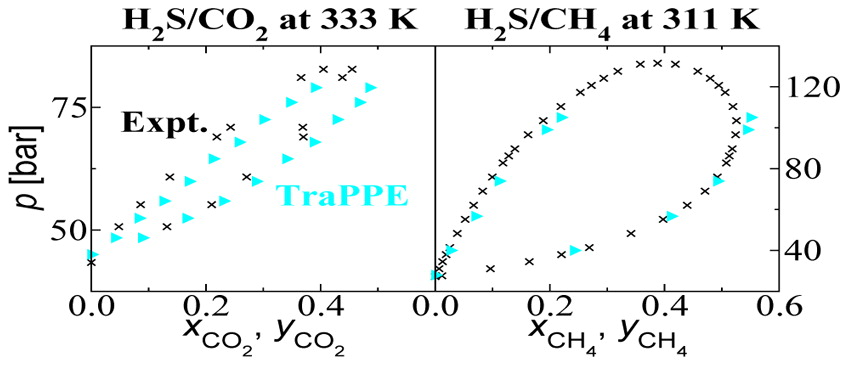J. Phys. Chem. B 119, 7041-7052 (2015)
The transferable potentials for phase equilibria force field is extended to hydrogen sulfide. The pure-component and binary vapor–liquid equilibria with methane and carbon dioxide and the liquid-phase relative permittivity are used for the parametrization of the Lennard–Jones (LJ) and Coulomb interactions, and models with three and four interaction sites are considered. For the three-site models, partial point charges are placed on the sites representing the three atoms, while the negative partial charge is moved to an off-atom site for the four-site models. The effect of molecular shape is probed using either only a single LJ interaction site on the sulfur atom or adding sites also on the hydrogen atoms. This procedure results in four distinct models, but only those with three LJ sites can accurately reproduce all properties considered for the parametrization. These two are further assessed for predictions of the liquid-phase structure, the lattice parameters and relative permittivity for the face-centered-cubic solid, and the triple point. An effective balance between LJ interactions and the dipolar and quadrupolar terms of the first-order electrostatic interactions is struck in order to obtain a four-site model that describes the condensed-phase properties and the phase equilibria with high accuracy.
